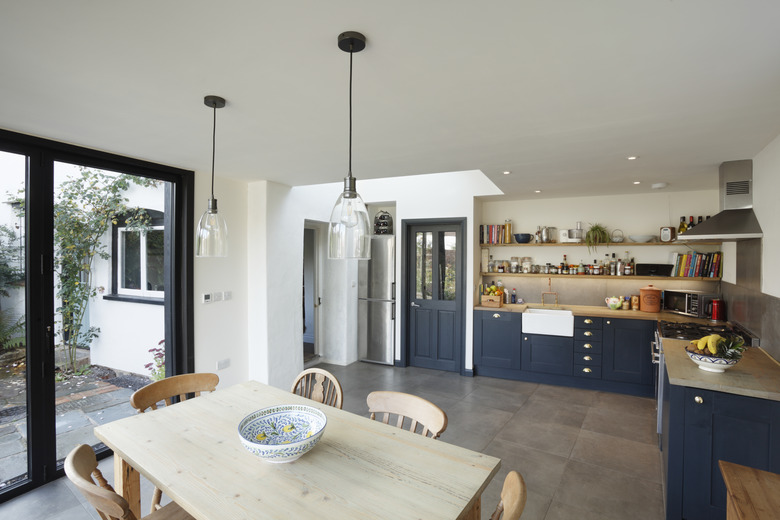The Best Height For A Chef's Prep Table
A chef's prep table provides additional countertop space for food work. It can be used for nearly any kind of kitchen work but is usually a space to chop or mix ingredients when preparing a meal. Since chopping and mixing are both physical actions that can require a lot of energy from the chef, it's important that the chef's prep table is at the right height for the person using it. That being said, of course, chefs come in all kinds of heights, and no one table will suit everyone.
Important Ergonomic and Safety Considerations
Important Ergonomic and
Safety Considerations
Proper ergonomics when cooking is critical, especially when cooking something complicated or that takes a substantial amount of time to prepare. It's important that the chef doesn't have to bend over too far to chop, which can cause back and neck strain.
To find the ideal height for a prep table, stand straight up and let your arms rest at about a 45-degree angle to the table. You'll be looking down at the table as your hands work, but if the table is at the proper height, the strain will be in your neck, not your back. Be sure to test it out with whatever repetitive motions your regular cooking work requires, because ergonomic safety is key.
Choosing a Chef’s Prep Table
Choosing a Chef's Prep Table
Most home kitchen counters are 3 feet tall (36 inches), which means most separate prep tables are the same height so that they work well with existing kitchen counters. For reference, most kitchen or dining room tables are around 30 inches tall, while bar tables hit around 42 inches.
Some prep tables for residential kitchens have adjustable heights, which means the chef can find a height that's more comfortable for them. Restaurant and industrial kitchens also normally start at three feet, but for kitchens with many workers, they're likely to have multiple prep tables or stations at multiple heights.
Elite Restaurant Equipment explains that most prep tables for commercial use come in stainless steel, as it's easiest to clean and disinfect. However, chopping and slicing vegetables or meats can leave scratches on the surface (due to the acids in some foods) that can wear the table down over time. Many home prep tables use butcher's block, a type of wood often used for heavy-duty cutting surfaces, which has a nicer feel and a better look. Webstaurant Store explains that many bakeries also use wood-topped tables. Wood prep tables can be sanded down to remove any dings or scratches that accumulate over time.
Adjusting a Chef’s Prep Table
Adjusting a Chef's Prep
Table
If you have a table that's just not the perfect height, you can likely make some adjustments. A prep table that's too high doesn't give you too many options, but a prep table that's too short can be raised by stacking butcher's block on top of it. Be sure it is well-secured before using it to chop food.
Alternatively, look at small, safe, ergonomic step stools to use with a table that's a bit high. This is especially relevant if you're working in a restaurant or commercial kitchen, which can be fast-paced and intense and require repetitive motions that can cause aches and sprains. Most companies are required to address ergonomic issues in the workplace, so don't feel bad discussing the situation with a boss or manager.
It's important to watch your posture when cooking in general. Don't let your shoulders hunch forward for too long, or you may find stiffness and aches in your back. Roll your shoulders back occasionally while working in the kitchen and gently stretch your neck after spending long periods over a chef's prep table.
